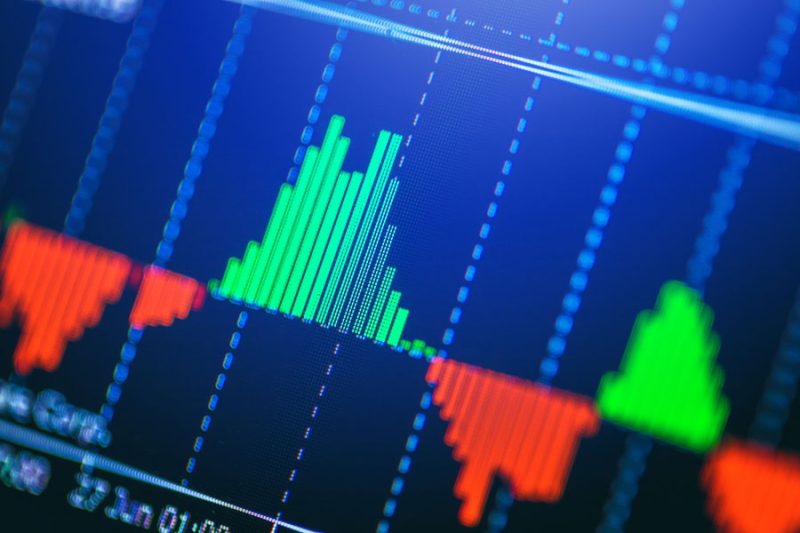by Liz Ann Sonders and Kevin Gordon, Charles Schwab & Company Ltd.
S&P 500 hits resistance

Source: Charles Schwab, Bloomberg, as of 8/19/2022.
Indexes are unmanaged, do not incur fees or expenses and cannot be invested in directly. Past performance is no guarantee of future results.
Breadth rolling over?

Source: Charles Schwab, Bloomberg, as of 8/19/2022.
Indexes are unmanaged, do not incur management fees, costs and expenses and cannot be invested in directly. Past performance is no guarantee of future results.

Source: Charles Schwab, Bloomberg, as of 8/19/2022.
Indexes are unmanaged, do not incur management fees, costs and expenses and cannot be invested in directly. Past performance is no guarantee of future results.
Breadth thrust … with a but
The rally that began in mid-June was directly related to the nearly 3.5% peak in the 10-year Treasury yield; with only two days separating that peak on June 14 with the S&P 500's low on June 16, shown below. Perhaps contributing to last week's weakness in stocks was the renewed upward move in bond yields—from a low that nearly reached 2.5% as August began, to about 3% today.
Bond yields driving stocks?

Source: Charles Schwab, Bloomberg, as of 8/19/2022.
Indexes are unmanaged, do not incur fees or expenses and cannot be invested in directly. Past performance is no guarantee of future results.
Drawdowns and "draw-ups"

Source: Charles Schwab, Bloomberg, as of 8/19/2022.
Indexes are unmanaged, do not incur management fees, costs and expenses and cannot be invested in directly. Past performance is no guarantee of future results. Some members excluded from year-to-date return columns given additions to indices were after January 2022.
What say you quilts?
Sector quilt highlights volatility
![Over the past 12 months, Energy was the best performing sector with a gain of 76% while Communication Services was the worst with a loss of -28%.]](https://www.schwab.com/learn/sites/g/files/eyrktu1246/files/082222_F_Sector%20Quilt.png)
Source: Charles Schwab, Bloomberg. As of 8/19/2022.
Sector performance is represented by price returns of the following 11 GICS sector indices: Consumer Discretionary Sector, Consumer Staples Sector, Energy Sector, Financials Sector, Health Care Sector, Industrials Sector, Information Technology Sector, Materials Sector, Real Estate Sector, Communication Services Sector, and Utilities Sector. Returns of the broad market are represented by the S&P 500. Indexes are unmanaged, do not incur management fees, costs and expenses and cannot be invested in directly. Returns assume reinvestment of dividends, interest, and capital gains. Past performance is no guarantee of future results.
Factor quilt highlights recent shifts
![Over the past 12 months, Value was the best performing factor with a gain of 7% while Volatility was the worst with a loss of -6%.]](https://www.schwab.com/learn/sites/g/files/eyrktu1246/files/082222_G_Factor%20Quilt_0.png)
Source: Charles Schwab, Bloomberg. As of 8/19/2022.
The Dividends portfolio measures the most recently announced net dividend (annualized) divided by the current market price. The Growth portfolio captures the difference between high and low growers by using historical fundamental and forward-looking analyst data. The Leverage portfolio looks at firms' level of leverage using book and market leverage, along with debt to total assets. The Momentum portfolio separates stocks that have outperformed over the past year vs. those that have underperformed. The Profitability portfolio studies firms' profit margins using return on equity, return on assets, return on capital employed, and EBITDA margin. The Size portfolio distinguishes between small and large stocks using market capitalization, sales, and total assets. The Trade Activity portfolio is a turnover-based measure that looks at trading volume normalized by shares outstanding. The Value portfolio differentiates between "cheap" and "rich" stocks using valuation metrics such as earnings/price and book/price. The Variability portfolio gauges how consistent earnings, cash flows, and sales have been in recent years. The Volatility portfolio differentiates between more and less volatile stocks by looking at various aspects such as return volatility over the latest 252 trading days. Indexes are unmanaged, do not incur fees or expenses and cannot be invested in directly. Returns assume reinvestment of dividends, interest, and capital gains. Past performance is no guarantee of future results.
Reversion to the meme
Shown below, the "original" memes such as GameStop and AMC had double- and triple-digit percentage gains over the past month (the metric shown is each stock's performance from its rolling 40-day low). However, Bed Bath & Beyond broke through the ceiling in recent weeks, surging by more than 400% at one point.
The meme extreme

Source: Charles Schwab, Bloomberg, as of 8/19/2022.
Past performance is no guarantee of future results. Individual stocks shown for illustration purposes only.
Tragically, for many retail traders—especially those who "got in" on the recent rally near the peak—prices have collapsed over the past few trading days for stocks like Bed Bath & Beyond. In fact, Friday's swoon was the stock's worst day in history, falling a whopping 41%. Compared to the early-2021 frenzy, the irony associated with the stock's decline this time is that it was a billionaire investor's fund that came out on top—pocketing a hefty gain from a sale near the peak, which triggered the rout in the stock. On top of that, capping off the trading week was an announcement that the company's suppliers are restricting or halting shipments as the retailer has fallen behind on payments.
As is always the case, we never point out individual stocks for recommendation (either buy or sell) purposes. The flash rally and crash of stocks like many of the memes should serve as an important reminder for investors: Neither "get in" nor "get out"—and/or "get rich quick" schemes—are investing strategies. They simply represent gambling on moments in time—the antithesis of investing, which should be a disciplined process over time. That's a good place to end.
Copyright © Charles Schwab & Company Ltd.
















